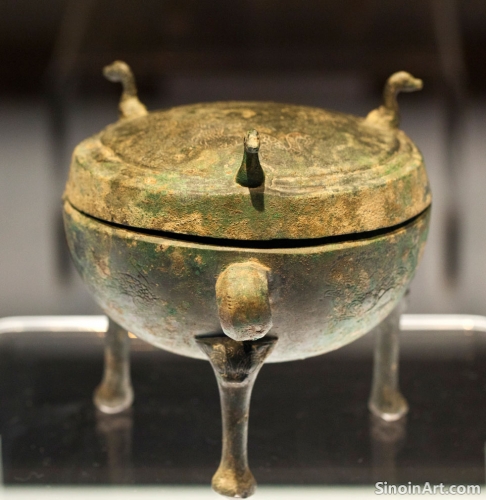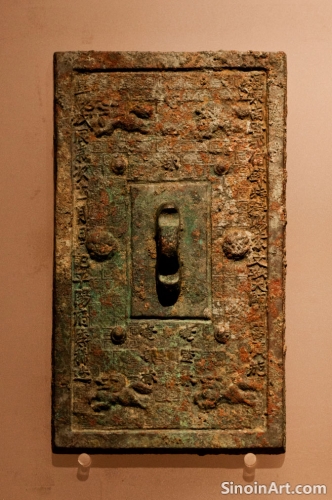Bronze Ware and the Development of Ancient Chinese Music Theory: The Use of Scales, Intervals, and Tuning
|
The creation and use of bronze musical instruments in ancient China played a crucial role in shaping the development of music theory, with the precise tuning and arrangement of bells, chimes, and other instruments leading to a better understanding of scales, intervals, and harmonic relationships. The close interplay between instrument design and musical theory helped to codify the principles of musicality for generations to come. The exploration of scales, intervals, and harmony was enhanced by the precision that was available through the use of bronze in instrument design.  The carefully tuned sets of bronze bells, particularly the bianzhong, allowed ancient musicians to experiment with different melodic and harmonic combinations, leading to a greater awareness of musical patterns and structures. The design and construction of these instruments demonstrates a sophisticated understanding of musical acoustics and also of metalworking techniques.  The development of specific scales, modes, and tuning systems was often influenced by the design and construction of bronze instruments, with musicians relying on these instruments to create and perform music. The carefully tuned bells helped to establish a framework for Chinese music theory and practice.  The study of bronze musical instruments and their connection to ancient Chinese music theory helps to illuminate the complex relationship between art, science, and mathematics in shaping the traditions of Chinese music. These instruments helped to establish a firm and enduring foundation for Chinese music. The combination of scientific understanding and artistic creation is a hallmark of ancient Chinese culture. |
Tag : bronze music theory, ancient Chinese scales, instrument tuning, musical intervals, bianzhong
Related information
- Bronze Ware and the Development of Ancient Chinese Writing Systems: From Script to Art
- The Evolution of Bronze Mirror Design: From Early Simplicity to Ornate Patterns and Narrative Scenes
- Bronze Ware and Ancient Chinese Medical Practices: The Use of Instruments in Surgery and Healing
- The Influence of Nomadic Cultures on Chinese Bronze Ware: Cross-Cultural Exchanges
- Bronze Ware and Ancient Chinese Astronomy: Celestial Motifs and Interpretations
This article explores the relationship between bronze ware and the development of ancient Chinese writing, highlighting how the medium of bronze influenced the forms and styles of writing, and how it helped to establish the importance of writing in ancient Chinese culture.
This article explores the evolution of bronze mirror design in ancient China, highlighting the shift from simple forms to more complex designs, including the use of intricate patterns, symbolic imagery, and narrative scenes, demonstrating the interplay between art, technology, and cultural change.
This article explores the use of bronze in ancient Chinese surgical and medical practices, highlighting the creation of scalpels, needles, forceps, and other tools, and revealing the sophistication of ancient Chinese medical techniques.
This article explores the influence of nomadic cultures on Chinese bronze ware, highlighting the adoption of new forms, styles, and techniques, the influence of animal motifs, and the role of trade and diplomacy in the transmission of cultural ideas.
This article explores the connection between bronze ware and ancient Chinese astronomy, highlighting the presence of celestial motifs, the creation of astronomical instruments in bronze, and how this interrelation reveals insights into ancient Chinese worldview and their understanding of the universe.